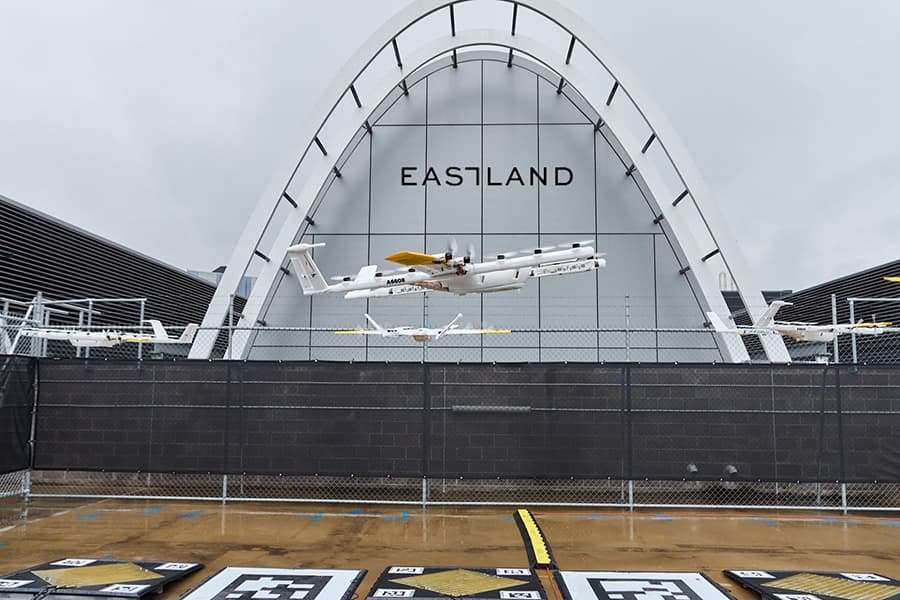It’s all about the search! Go to a search engine to look at a product and a shop, and what do you find? If whatever you do find is not satisfactory, then chances are you’ll move to Amazon and buy it online. How does a centre or a retailer make sure the sale occurs in the shop?
The search cards are stacked against the shopping centres and retailers looking to influence shoppers online to visit and spend in their stores.
Fundamentally, more than 80% of people still prefer shopping in-store, while more than 72% of people turn to their mobile phones to help them find what they are looking for. Google search forms an integral part of this journey to a physical retail location.
However, the consumer experience from Google search to an in-store visit remains far from ideal for several reasons (I will cover these later). The outcome of this sub-par digital experience is not great for the shopping centres and retailers looking to influence consumers to visit and spend in their stores.
Let me explain.
When a shopper has the intent to find a retail location at which to shop, they often turn to Google. If the shopper receives an answer from Google when they ask a question that matches their intent to shop in-store, and Google provides useful information, they are highly likely to visit that retail location.
Research by Google has found that between 50% and 75% of shoppers who find a store online go on to visit that store within a day, and 18% will make a purchase.
However, if the shopper does not get a good answer to the question as a search result and/or the digital experience they are provided is misaligned to the question, they may buy online instead. Which means a lost store visit and potential sale for the retail location.
For those in the know, this shouldn’t come as a surprise. However, what is surprising is that the sub-optimal experience provided by Google isn’t great for Google themselves either. This is best explained by the following data points:
• Google’s share of product-related searches has decreased from 36% in 2016 to 28% today, as reported by L2 Inc.
• Amazon now exceeds 55% of consumers’ first product searches in the US.
In other words, because Google is often unhelpful for shoppers who are looking for physical retail locations, then they stop using Google for this purpose and go to the next best thing, which is Amazon led e-commerce.
The takeaway here is that, when people are using Google to help them find retail stores that meet their needs, it is incredibly important that shopping centres and retail stores that can meet them appear highly and informatively in the search results.
However, this is no easy feat.
This is where the search cards start to be stacked against physical retail locations
Using search to find products that sell online works beautifully. Simply put in a few key words and you’ll receive myriad relevant answers in return. Therefore, seeing the value of search for an online seller is easy. You can measure every transaction influenced by paid and organic searches, and therefore calculate the return on investment. Nearly everything to do with search and paid search advertising, as it relates to shopping, has this at its core.
Things are quite different when using search to influence people to visit and spend in-store. Attributing the influence search had on the visit and spend is not straightforward. It is something Google is investing heavily in solving (see their recent announcement on their attribution capabilities) as they know it will help them to capture back product search activity from Amazon.
The attribution modelling mentioned in this article will be great, as it will provide better insight into how advertising drives in-store sales. However, it only really helps big retailers and does not change some fundamental issues impacting how search influences shoppers expressing intent to visit a retail location.
So, what are the issues that impact the effectiveness of how search works for shoppers trying to find a retail location to visit?
1. Search is only as good as the data it can index and use to answer questions. If the data that represents a physical retail location is not organised and published in a format Google can index and understand, then Google does not know about it. Not many retail stores or shopping centres are publishing the same level of data about their physical stores as online retailers and online marketplaces.
2. The frequency with which questions are asked impacts if Google will answer them with ads. If queries are too infrequent then Google does not serve ads that match them because it is not economic to do so. That means that lots of questions people would ask Google about finding stores will not be effectively answered until lots of people are asking them – a chicken-and-egg problem of sorts.
3. Online retailers are bidding up advertising prices. Online retailers are paying more and more for AdWords linked to product brands and categories which direct shoppers to online commerce pages. This means that keywords which include the brand, category AND suburb may no longer be a cost-effective purchase for a physical retail location, even though their ad represents a better answer to the shopper’s question.
But all hope is not lost. Google is focused on helping the online to in-store journey.
Google is providing more tools to help physical retail locations influence more shoppers to find and visit their stores. This is a sensible move because a) this is genuinely valuable for physical retailers and b) this equates to more ad revenue for Google. Their two primary tools are:
1. Local Inventory Ads. These are a great way to influence people searching for products nearby to visit your store. As a retailer, if you have the technology and data in place to do it, then it is a great advertising solution. However, I would argue that the ads do not always match the intent of a shopper. Moreover, if you are a shopping centre this advertising strategy is not available to you unless you have product level data from your retailers.
2. Location Extensions. These help people find locations of retail stores by showing your ads with your address, a map to your location, or the distance to your business. They work well when people are searching for store names, but not as well when searching for brands and categories of product. They work well for some retailers, but are not a tool shopping centres can really use.
While organic and paid search advertising is not yet well optimised, everyday thousands of questions shoppers have about finding stores go unanswered or receive unhelpful answers. Which means less shoppers in-store.
There are some simple things shopping centres can be doing.
Instead of waiting for Google to refine these tools, there are several things shopping centres can be doing to influence shoppers to visit their centre and retailers on search. Shopping centres need to make sure their digital presence and advertising strategy is optimised for the intent consumers are expressing. This means that you will need to:
• Work out which keywords will best match the intent of shoppers in your trade area and execute those campaigns on Google AdWords intelligently
• Build digital landing pages that align to the intent being expressed by providing the information that helps shoppers to visit those stores
• Get started now; the data that you organise about stores and the data you get from running experiments in AdWords are essential to understanding how to do this for the future.
What does the future look like?
The ideal future is simple to say, hard to create. A shopper should be able to ask a digital assistant or search engine a complex question about finding a physical store and get a personalised answer about the best retail location to visit in return. Then an autonomous car will pick them up, take them there and then drop them home!




















